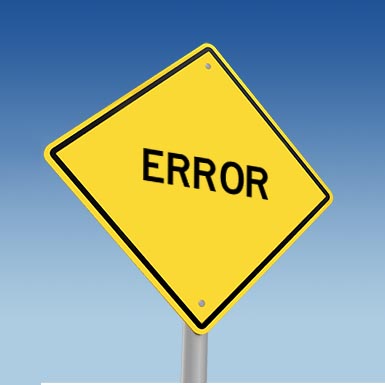Common Form 990 Mistakes
What Are the Most Common Form 990 Mistakes Nonprofits Make?
Nonprofit organizations must exercise due diligence in selecting the appropriate Form 990 return each year to avoid penalties for filing errors. The IRS may reject or return electronically filed or paper-filed Form 990 series returns if they are incomplete or the wrong form is submitted. Organizations should carefully review their 990 returns to avoid common filing errors identified by the IRS before submitting them.

Missing or incomplete schedules are among the most common errors causing the rejection of a Form 990 return. First, use the appropriate return for the tax period for which you’re filing. Keep in mind that certain organizations are prohibited from filing Form 990-EZ.
You can help avoid common preparation errors by taking the following steps:
Form 990 and 990-EZ
- Check the accuracy of your Employer Identification Number, tax period, and Group Exemption Number (if applicable).
- Indicate the correct IRC subsection for the organization as indicated in the determination letter.
- Fully complete all parts of the core form.
- Complete all parts of Schedule A for Section 501(c)(3) or 4797(a)(1) organizations (and for 990-EZ filers, Part VI).
- Complete Schedule B (Schedule of Contributors), or certify it isn’t required.
- Complete Schedule O (Supplemental Information) to provide narrative information required or supplement responses throughout the form.
- Complete fully and attach all other required lettered schedules determined for Form 990 by completing Part IV (Checklist of Required Schedules). (For Form 990-EZ, complete the trigger questions for Schedules A, B, C, E, G, and L throughout the form.)
- Answer “Yes” or “No” to each relevant question (unless otherwise instructed).
- Include an entry on all total lines, including zero (0) when appropriate.
- Omit any unnecessary personal-identifying information.
- Include the proper signature by an authorized officer of the organization.
990-PF
- Complete all required parts by answering Yes, No, or N/A (not applicable) to each question.
- Complete all of Part II (Balance Sheet) columns A, B, and C if the foundation’s total assets are $5,000 or more at any time during the year. If less than $5,000, all of columns A and B are required, but only line 16 of column C is required.
- Complete Part IX (Minimum Investment Return) if the organization is a domestic foundation, foreign foundation claiming status as a private operating foundation, or private operating foundation as described in the tax code.
- Complete Part XIV (Supplementary Information) if the foundation had assets of $5,000 or more at any time during the year.
- Complete Schedule B (Schedule of Contributors), or certify it is not required by checking the box in Part I, Line 2.
- Omit personal-identifying information that is unnecessary.
- Include the proper signature by an authorized officer of your organization.
Final Thoughts
Meticulous preparation and review of Form 990 returns are crucial to prevent errors that could lead to rejection or return of the filing. Additionally, it’s essential to avoid costly failure-to-file penalties, which range from $20 to $110 per day for large organizations.
Brady Ware Nonprofit Advisors want to help you fulfill your mission with financial health and compliance services and a network of nonprofit consultants who specialize in strategic decision-making.
Questions?
Dylan manages a variety of accounting and auditing engagements for the firm’s Dayton, Ohio, clients in numerous industries, including construction, manufacturing, and technology. He has an extensive background in auditing nonprofit organizations, including those that are recipients of federal funding, as well as experience in auditing employee benefit plans.













